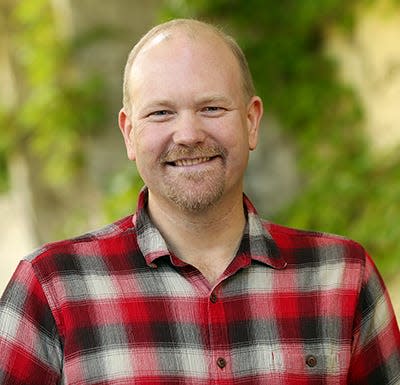The recent run of record-breaking warm temperatures here in Minnesota has spurred numerous casual conversations about climate change, including frequent half-serious exhortations of “welcome to the new normal!” While our short-term weather is not the same as the long-term climate, the past few years have certainly given us a hint of what the future may bring: warmer winters, wetter summers, more energetic storms, and more frequent record-breaking weather events of all kinds. While Minnesota has not yet turned into Kansas — and likely won’t for many decades — we’d be wise to consider how investing in climate resilience now will help us all be better prepared for the sorts of disruptions to historic weather patterns we can expect in the future.
Climate scientists are highly confident in two basic weather trends for Minnesota, projecting a future that is warmer — especially in winter — and wetter — especially in summer — than the past century. Average temperatures in our state have increased 3 degrees Fahrenheit since 1895, with most of the increase concentrated in the winter months. Spring precipitation is expected to increase 15-20% by midcentury. Indeed, all of the top 10 warmest and wettest weather years on record have occurred since 1998.

For nearly a decade now the US EPA has warned that Minnesota should expect the impacts of climate change to include increased flooding, reduced winter snow and ice, poor air quality in summers due to increased ozone and wildfire smoke, and a mixed bag of impacts on agriculture — both a longer growing season and more frequent droughts.
So how do we prepare for change?
Climate resilience means different things in different settings. For the household, it may simply mean preparing for more severe weather events — especially heavy summer rains — and for the consequences of warmer winters. At the community level, it might mean retrofitting infrastructure like bridges and roads to handle greater extremes in precipitation and the implications of repeated winter thaws. State-level planning will need to address economic impacts, such as changes in agricultural yields, environmental impacts ranging from habitat loss to new invasive species, and direct impacts on our communities from events like floods, wildfires, and droughts. All of these may currently be managed on an ad hoc basis, responding as crises arise, but investing in resilience can help us minimize the risks, costs, and disruptions anticipated over the long term as the climate warms.
The state of Minnesota has defined climate resilience as “the ability of communities and ecosystems to cope with the effects of climate change.” Some measure of resilience is inherent, already built into the social, economic, and physical systems upon which our communities were built. But the design assumptions underlying those systems were based on the past climate: roads and bridges were designed for expected rainfall levels, businesses were based on reasonable assumptions about seasonal weather patterns, and homes were built in places that were understood to be safe from floods, fires, and storms.
Now things are changing. Climate scientists tell us we are well past the point of avoiding climate change, and probably past the point of being able to mitigate many of its impacts either. As a “new normal” develops over the coming years we will have to adapt — and doing that successfully means investing in resilience before it is too late. As the governor’s office explains, that means “preparing Minnesota communities, businesses, physical infrastructure, and the natural environment to mitigate, respond to, and recover from the impacts of climate change.”
Becoming climate resilient will require collaboration at every level and a willingness to accept that the future will not look exactly like the past. We will need to invest in infrastructure, ecosystems, and people in ways we have not previously considered. We will need to adjust our expectations, plan for disruptions, and accept that the climate our grandparents remember will ultimately become just that: a memory of the way things used to be.
When Dorothy exclaimed “We’re not in Kansas anymore” she was reacting to a sudden, shocking change. Climate change is different—it will arrive more slowly, in fits and starts. But unlike Oz, is it real. Fortunately, reality is something we can prepare for.
— This is the opinion of Times Writers Group member Derek Larson. He teaches history and environmental studies at The College of St. Benedict and St. John’s University. His column is published the first Sunday of the month. He welcomes your comments at twg@anderson-larson.net.
This article originally appeared on St. Cloud Times: Derek Larson: How do we prepare for climate change?
Signup bonus from





